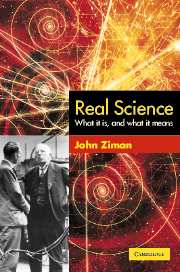Book contents
- Frontmatter
- Contents
- Preface
- 1 A peculiar institution
- 2 Basically, it's purely academic
- 3 Academic science
- 4 New modes of knowledge production
- 5 Community and communication
- 6 Universalism and unification
- 7 Disinterestedness and objectivity
- 8 Originality and novelty
- 9 Scepticism and the growth of knowledge
- 10 What, then, can we believe?
- Endnotes
- Bibliography and author index
- Index
6 - Universalism and unification
Published online by Cambridge University Press: 24 August 2009
- Frontmatter
- Contents
- Preface
- 1 A peculiar institution
- 2 Basically, it's purely academic
- 3 Academic science
- 4 New modes of knowledge production
- 5 Community and communication
- 6 Universalism and unification
- 7 Disinterestedness and objectivity
- 8 Originality and novelty
- 9 Scepticism and the growth of knowledge
- 10 What, then, can we believe?
- Endnotes
- Bibliography and author index
- Index
Summary
Generalization and abstraction
The academic ethos lays down that scientific knowledge has to be the common property of a universal community [3.4]. Social realities obviously limit the scope of this norm. Nevertheless, it firmly shapes the type of knowledge that is admitted into the scientific archive. In principle, science deals only with what could be communicated to and accepted by anybody, regardless of their other personal beliefs or special circumstances.
The result is that science is primarily concerned with generalities. Particular facts are not specifically excluded from the scientific archive. Many serendipitous discoveries – especially in the biomedical sciences – have been triggered by published reports of apparently singular events. But such particularities are very, very seldom of ‘universal’ interest. It is quite impracticable to ‘share’ with other scientists the immense quantities of factual information that accumulate in the course of research. If this information is to become communal property, it must be encoded and ‘compressed’ into a much more compact form. In other words, the detailed facts must be interpreted and presented as specific elements of more general patterns – typically as entities governed by theories.
Trying to give a basic, comprehensive account of the concept of a ‘theory’ is an invigorating but fruitless walkabout in metaphysics. In all that follows, we shall treat ‘theories’, like ‘facts’, as primitive epistemic entities – ‘natural kinds’ as some philosophers call them – with which we are better acquainted from experience than from philosophical analysis. Indeed, from this naturalistic point of view, facts and theories are closely interwoven. It is impossible to talk about knowing something as a scientific fact without reference to a theory [5.5, 5.6].
Information
- Type
- Chapter
- Information
- Real ScienceWhat it Is and What it Means, pp. 117 - 154Publisher: Cambridge University PressPrint publication year: 2000
